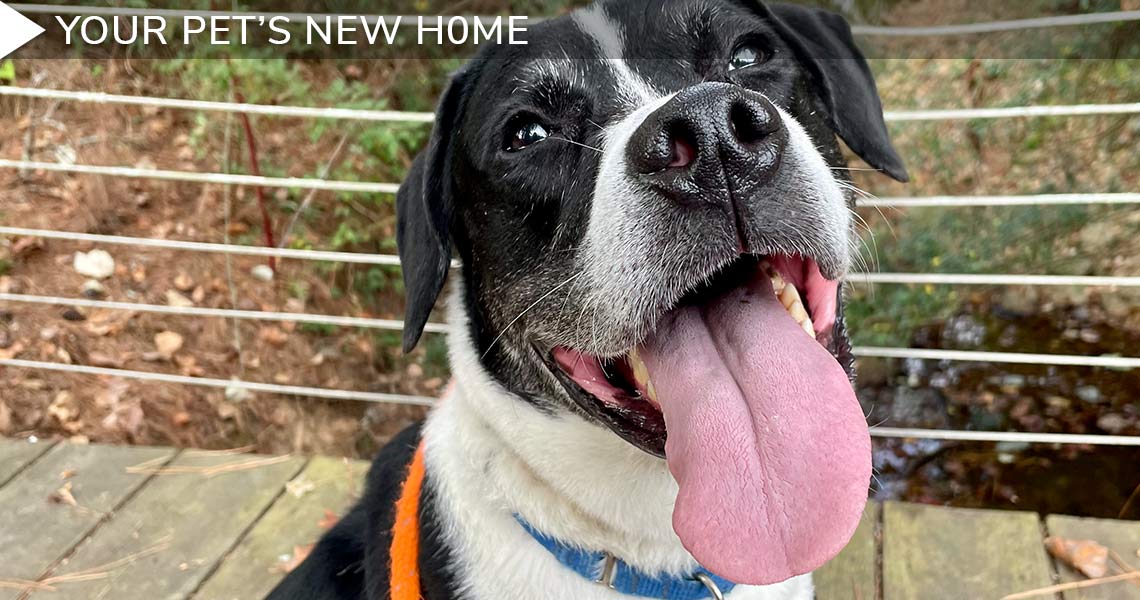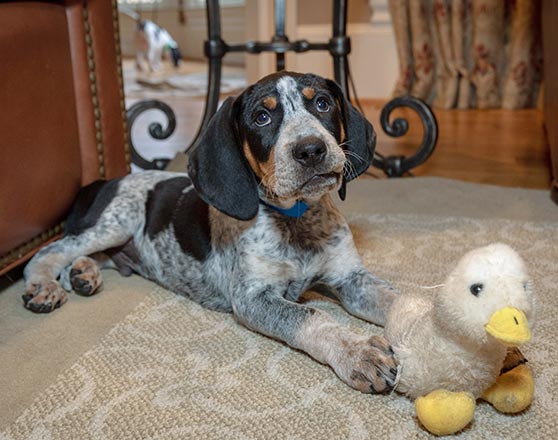
ENSURING A SMOOTH TRANSITION AFTER PET ADOPTION
The first few weeks in your home are critical for a new pet. Both dogs and cats will need to be introduced to their new domain and to their new family members. Your new dog might be confused about where it is, and what to expect from you. Although cats are usually confident, self-sufficient, and easily adaptable, your new cat will need to be shown where its food and litter box will reside. Setting up some clear structure in your home will be paramount to create a smooth transition for your new pet.

PREPARE IN ADVANCE
Before you bring your new family pet home, it’s a good idea to determine where Fido or Whiskers will be spending most of its time. A dog may also look for something to chew as a stress reliever, so keep those favorite shoes and other tempting items out of reach. You may want to have some toys on hand to introduce as appropriate chewables. If you plan to offer a dog or cat bed, have it on hand to show it its designated special place.
Prepare your children for your adopted pet. Explain the responsibilities that come with owning a pet. Mare sure they understand what's expected of them before you bring the pet home.
Also choose a safe place for your cats to go if it wants to avoid a new dog in the house.
PET PROOFING TIPS
Dog or cat-proof the area where your pet will spend most of its time during the first few months. This may mean taping loose electrical cords to baseboards, storing household chemicals on high shelves, removing plants, rugs, and breakables, and installing baby gates.
MAKE A TRAINING PLAN
Training is an essential part of making sure that your new dog is a well-behaved member of society. Mostly Mutts provides free training for all dogs adopted from us, and a coupon code will be made available at time of adoption . Please review the classes available so you will be ready to sign up promptly after adoption. Our adoption counselors will discuss with you during the adoption if specific classes are recommended for your dog.
CRATE TRAINING
A crate is a great place to keep your dog safe and out of trouble when you can’t watch it. Crate training is also a vital part of house-breaking success, since dogs are den animals, typically wanting to keep their sleep space clean. If you plan to crate train your dog, be sure to have the crate set up and ready to go for when you bring your new dog home. Always make sure there is a bowl with fresh water in the crate. Initially, leave the crate door open so that it can go in whenever it wants to relax.
However, if you have more than one dog, the door of the empty crate should be kept closed, to avoid the risk of a territorial dispute between the two dogs when Spot decides to check out Fluffy’s private den.
In any case, a professional trainer can help you correctly crate train so that your dog will see it as a safe haven as opposed to a place of punishment and isolation.
CREATE A VOCABULARY LIST
Take the time to create a list of words that everyone in your household should use when giving your dog directions. This will help prevent confusion and allow the dog to learn commands more quickly.


THE FIRST WEEK HOME
We know that change can be stressful, and your new dog feels the same way! Give it time to acclimate to your home and family before introducing it to strangers. Allow a few days to let your new pet settle in, get to know you better, and begin the bonding process. Make sure children know how to approach the dog without overwhelming him. Try to create a calm and quiet environment around your dog. Not only will this allow your dog to settle in easier, it will give you more one-on-one time to get to know your dog's likes and dislikes.
LET THE HOUSEBREAKING BEGIN
Housebreaking is a process, and we will help give you helpful strategies to accomplish this when you adopt from us. In the meantime, here’s some good advice.
Your new pet may experience stress with the change of environment (from shelter or foster home to a forever home), and may temporarily forget the potty training previously learned. The first thing to do when your dog arrives at its new home is to take it to the designated outdoor area to relieve itself, and if it does, give lots of praise. If you take it inside your home before it relieves itself outside, you may be in store for an unexpected leg lift on your rug. It’s not uncommon to experience a few accidents. Coming into a new home with new people, new smells, and new sounds can throw even the most housebroken dog off track, so do not be discouraged. Place your new kitty into its litter box to establish that this is the place to go. Cats usually get the routine down quickly. Patience and consistency will set everyone up for success.
FEEDING
Try to follow the same feeding schedule that your adopted dog/cat had previously, at least for the first few days, to avoid gastric distress. You may also want to consult your veterinarian about how many times a day your dog should eat. Cat feeding is usually less complicated, and they can usually free feed, unless there’s a medical reason for a strict feeding schedule. If you wish to switch to a different food brand, do so over a period of about eight days by adding one-part new food to three-parts of the old food for several days; then switch to half new food, half old, gradually transitioning to more of the new food each day. This is a guideline only. Always follow your veterinarian’s advice on feeding your pet.
FEED SEPARATELY
It’s a good practice to separate your new dog to eat in private, especially if you have other dogs. This will prevent food fights. When the dogs are finished eating, bowls should be picked up immediately, since dogs have been known to also fight over empty food bowls.


WHAT'S MY NEW NAME?
He may have been named Rufus by his original owner, then he became Calvin at the County shelter, then renamed Jack at the rescue facility, and then you take him home and name him…. Boomer. Then you wonder why he isn’t responding to his name! Unfortunately, the endless renaming is often just part of a dog’s rescue transition, but it’s quite amazing how well they can keep learning their new name.
To help them learn quickly, always say their name in connection with a positive action (like a scratch on the tummy) or a treat. Always say their name in connection with training as well by saying, “Boomer-SIT.” Before you know it, Boomer will be responding to his name as if it has followed him everywhere.
PICK UP THOSE TOYS
Your new dog may be an extreme toy lover. Your other dog may love them as well. This can be a recipe for trouble. Take toys, bones, etc. away to avoid possession issues between dogs until everyone has had a chance to adjust.
IN THE NEXT FEW WEEKS
People often say they don’t see their dog’s true personality until several weeks after adoption. Your dog may be a bit uneasy at first as it gets to know you. Be patient and understanding while also keeping to the schedule you intend to maintain for feeding, walks, etc. This schedule will show your dog what’s expected of it as well as what it can expect from you. You will soon see a bond of trust being built, as your new dog blossoms as a family member.
If you encounter behavior issues you are unfamiliar with, speak to either your veterinarian or a trainer who uses positive reinforcement techniques to help you and your dog overcome these behavior obstacles.
At Mostly Mutts Animal Rescue, most of our dogs are typically evaluated to determine behaviors and training skills they may have already learned. We also provide additional basic training, which is detailed on their profiles. Regardless of where you rescue from, you will continue learning about your pet’s unique personality as it assimilates into its new life. With patience, understanding, and additional training if needed, your new dog or cat will be the best pet that it can be!
To set up everyone for success, we offer new adopters free training classes to learn some of the most important obedience commands you will need to reinforce with your new companion. The classes are conducted by our experienced trainers, who have worked with dogs of all temperaments, breeds and sizes.


